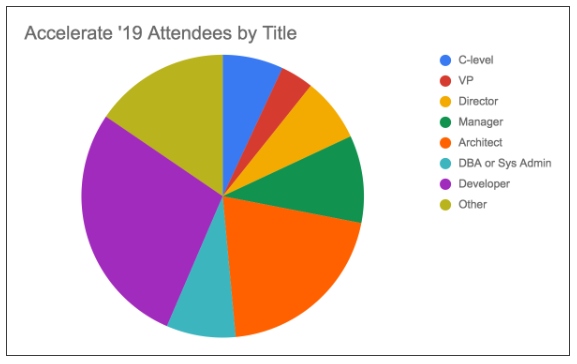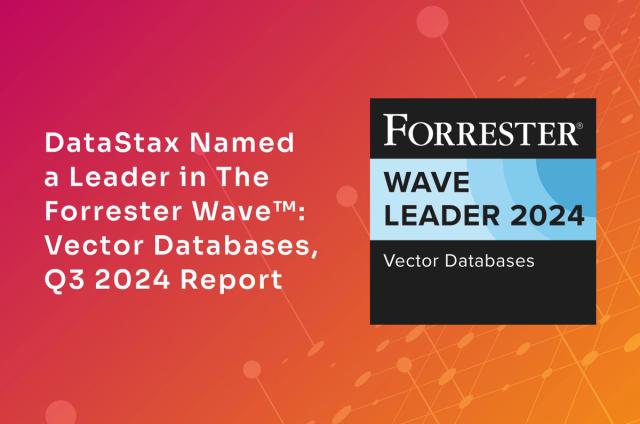DataStax Accelerate 2020 – Call for Papers Now Open!

DataStax Accelerate is where the Cassandra community comes together to explore the trends, strategies, and technologies driving modern application development and data management. This year the world’s premier Apache Cassandra conference is being held in two locations:
- May 11-13, 2020 in San Diego, California
- June 2-3, 2020 in London, UK
Of course, a conference is only as good as the quality of its content. That’s where you come in. We’ve opened the call for papers (CFP) and we’re looking for members of the community to share their experience and expertise with both open source Cassandra and DataStax as well as related technologies such as Kubernetes, Kafka, graph, and analytics.
The CFP closes January 22, 2020, but we highly encourage you to get your submission in before then.
Why Should You Submit a Paper?
Speaking at an event like Accelerate can be great for your career, the community, and for your budget. Here’s why:
- It’s Great for Your Career
There’s no doubt that being good at public speaking, especially when it comes to clearly articulating technical topics, is great for your career. Demonstrating your presentation skills will set you apart from others in your company and industry—it means you can deliver sales presentations, influential talks, and engage audiences at group events. - It’s Great for the Community
A key indicator of open source community health is the quality and quantity of its collective knowledge. By sharing your expertise and experiences with your peers, you will only make the Cassandra community stronger. A stronger community means higher-quality and more innovative contributions, content, and collaboration—a win-win for everyone. - You Get a Complementary Pass
If your CFP is accepted, you get a FREE pass! Other perks include discount codes for friends and colleagues, exclusive speaker swag, and access to the VIP speaker lounge.
What Makes a Session Compelling?
Successful technical sessions are rich with examples, code, or/or demos. They help the audience understand complex concepts or demonstrate how to use them. In comparison, business and use case talks provide scenarios that the audience can use to solve similar challenges in their own organizations.
We hosted 70+ sessions at Accelerate last year, and received overwhelmingly positive feedback on the quality of the content and the speakers. However, there were a few standout sessions. These include:
- Managing 400 Billion Requests with Zero Downtime for TurboTax
- Solving Optimal Data Placement for Instagram's Global Scale
- 10 Easy Ways to Tune Your Cassandra Cluster
- Tripling Performance by Using Thread per Core with DataStax Enterprise
- Modern Data Architectures with Kafka and Cassandra
What Are Common Traits of Accepted Submissions?
From my perspective as the chair of the CFP Review Committee, there were a few common threads across the accepted Accelerate ‘19 CFP submissions:
They Tell a Story
A majority of the accepted submissions, as well as the sessions that rated well in the attendees surveys, told a story and what the presenter learned along the way. And not every topic was groundbreaking. Lessons learned on a day-to-day basis are also valuable to others in the community.
The Audience Was Clearly Defined
The best abstracts clearly identified their target audience and how the session was applicable to them. As you can see from the attendance breakdown from Accelerate ‘19 below, software developers and architects were strongly represented. There was also a smaller but strong contingent of administrators and operations professionals. Who are you targeting with your presentation? Think of what that attendee might want to hear about and adjust your submission accordingly.

Sufficient Detail Was Included in the Abstract
The CFP Review Committee has the task of reading every submission and identifying the best talks. Many of the sessions we accepted last year had sufficient detail, enabling us to determine whether it would be a good fit for the conference. You don’t need to write a book, but some details on what the talk is about and what value the attendees will get from it goes a long way. And don’t forget, you are selling your talk and trying to make it stand out.
The Topic Was Clearly Defined
When you’ve been involved in a large project, it’s easy to want to talk about all the details that made it successful. These are 40-minute talks (35 minutes plus a 5-minute Q&A), so narrowing the focus to a few points will really elevate the quality of your submission and your talk. The people attending will want to know the fine details. Diagrams and code snippets are always welcome.
The Proposed Session Wasn’t a Sales Pitch
There is one thing the CFP Review Committee avoids when reviewing submissions—the dreaded sales pitch. Those types of presentations takes away from the integrity of the event and are rarely well-received by conference attendees. There are plenty of ways to give a presentation about projects and technologies without focusing on company-specific efforts. Think of ways to make it interesting for attendees while sharing your experiences, educating the community about an issue, or generating interest in a project.
What Should You Speak About?
If you’re still a bit stumped on what to speak about, here are some potential topics to get you started:
- Application Development
- Cloud
- Event Streaming
- Graph
- IoT
- Machine Learning/AI
- Microservices
- Operations
- Serverless
You can find more topics on the CFP submissions page.
Next Steps
The call for papers for DataStax Accelerate is open, and we will be accepting submissions until January 22. We understand that getting that paper submitted can be daunting. So, if you need help or just want to talk about your idea, feel free to reach out to us at accelerate@datastax.com.
Submit your proposal for Accelerate San Diego or Accelerate London today!




